#Southwestern cuisine
Video
This recipe is an outtake from The Unofficial Yellowstone Cookbook.
https://www.amazon.com/Unofficial-Yellowstone-Cookbook-Recipes-Inspired/dp/1956403205/ref=sr_1_1?crid=1N8Z29890R8Q1&keywords=jackie+alpers&qid=1683553016&sprefix=%2Caps%2C164&sr=8-1
#Yellowstone cookbook#Jackie Alpers#grilling#corn#husk#campfire#cookout#grilled corn#grilling tips and tricks#char#husks#recipe#cookbook photography#cookbook#vegetables#vegan#Southwestern cuisine#camping food#food#food photographer#flickr
3 notes
·
View notes
Text

Tortilla Salad
A quick meal, made with very little effort.
*** Kitchen Tips ***
GREAT COLLEGE GIFT: A staple snack for college kids so help feed their late-night study cravings! Send a snack care package to your college student.
#food#southwestern cuisine#tex mex#homemade#home cooking#home cooked meal#my photography#food photography#original photography#thelcsdaily#comfort food
18 notes
·
View notes
Video
youtube
Texas Roadhouse, Steakhouse Chain Specializing in Texan and Southwestern...
0 notes
Text
5 must-eat restaurants off the Route 66 in Flagstaff Things to do in Flagstaff
5 must-eat restaurants off the Route 66 in Flagstaff Things to do in Flagstaff
5 must-eat restaurants off the Route 66 in Flagstaff #NewYork Things to do in Flagstaff
#thingstodoinflagstaff #thingstodo #flagstaff
Watch the 5 must-eat restaurants off the Route 66 in Flagstaff video till the end.
9289 Views – 26 Likes.
You also like and comment.
This video will give you an idea about the subject you are wondering about.
Where to eat in Flagstaff for Mexican, historic Route…

View On WordPress
#andi berlin#arizona cuisine#arizona dining#arizona food#eating flagstaff#flagstaff#flagstaff food#flagstaff restaurants#gourmet southwestern food#grand canyon food#martanne&039;s#road eats#route 66#route 66 eats#this is tucson#where to eat in flagstaff
0 notes
Text
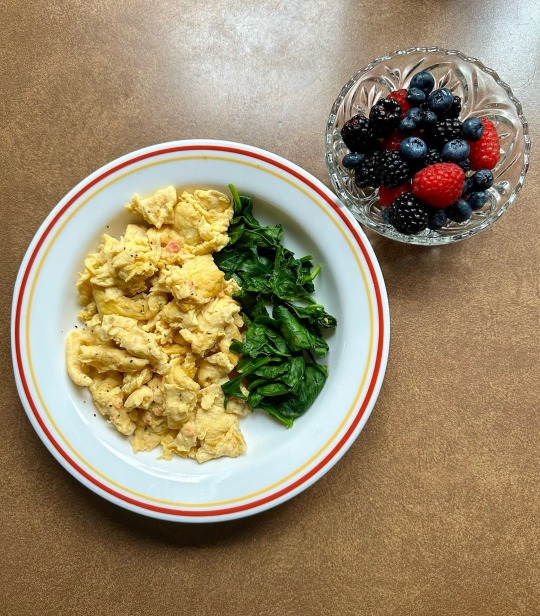



Food log 4/11/24 🍓
3/4 cup southwestern egg beaters (80), sauteed spinach (7), berries (60)
Lightlife jumbo vegan hot dog (100), aunt Millie’s low carb hot dog bun (50), ketchup (15), sweet relish (10), mustard (7)
Strawberries (28), 1/2 banana (63)
Lean cuisine creamy pasta primavera (240), katz frozen cinnamon roll (200)
#low calorie diet#low cal restriction#low cal diet#low calorie#weight loss diet#low cal food#low calorie food#low cal ideas#low cal#low calorie restriction#low calorie breakfast#low cal meal#low calorie meals#low cal snacks#low cal dinner#low calorie dinner#low calorie meal#low calorie snacks#wieiad#food log#food diary#small portions#small meal#small meals#small portion#portion control
25 notes
·
View notes
Text

November is National Native American Heritage month in the USA! Did you know that many of the UK’s favourite kitchen garden plants were originally domesticated by indigenous peoples in the Americas? The Native Americans’ domesticated plants now feed most of the world and have become an integral part of cuisines in Europe, Africa, and Asia.
1. Potato: Potato (Solanum tuberosum) was domesticated by indigenous Americans in the Andes at least 10,000 years ago. Genetic studies indicate hybridization of different wild potato varieties in the species Solanum brevicaule in Southern Peru produced the original domesticated potato. Today, indigenous people in Peru have over 4000 varieties of potato, each with their culinary and cultural significance. The Chuño potato can be preserved for up to 15 years, making it an important food source during lean times in the days of the Inca Empire.
2. Corn: Indigenous Americans domesticated corn (Zea mays) from the wild grass Teosinte (Zea mays parviglumis) of southwestern Mexico approximately 9,000 years ago. The wild Teosinte is a miniature corn, with ears containing only 5-12 hard seeds. From the initial domestication in Mexico, corn spread north and south to become the iconic food plant of indigenous America. Native American corn differs from the familiar sweetcorn because it was selectively bred to be dried and preserved rather than eaten fresh. Native American corn varieties can be a kaleidoscope of beautiful colours and are either flint corn (dried for preservation and then soaked for food purposes), flour corn (processed into masa harina flour), or popcorn.
3. Beans: Our familiar kitchen garden beans all come from indigenous American agriculture. The fresh green beans and most of the dried beans belong to the same species, the Common Bean (Phaseolus vulgaris) which was domesticated via hybridization of several wild species in Mesoamerican around 4,000 years ago. The Lima Bean (Phaseolus lunatus) was domesticated in South America around 4,000 years ago and spread north of the Rio Grande by the 1300’s.
#katia plant scientist#plants#gardening#agriculture#crops#potatoes#corn#beans#native american#native american heritage month#indigenous food#history#native american culture#native american food#domestication#botany#plant based
49 notes
·
View notes
Text

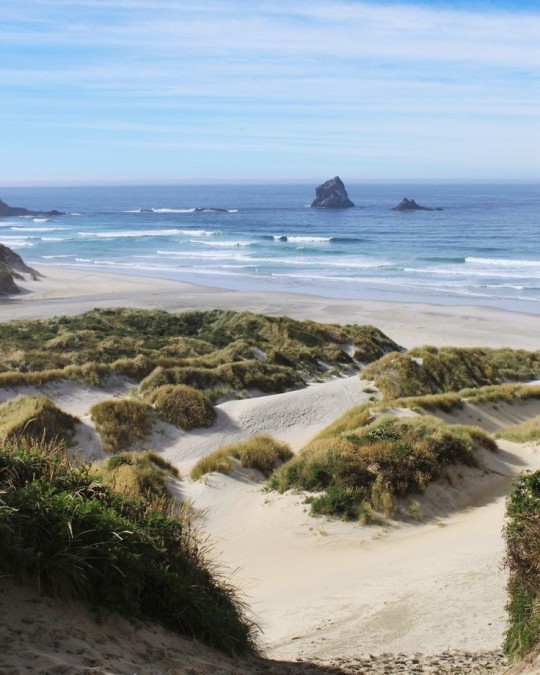


The Enchanting beauty of New Zealand
Nestled in the southwestern Pacific Ocean, New Zealand beckons travelers with its unparalleled natural beauty, diverse landscapes, and rich cultural heritage. A land of towering mountains, pristine beaches, lush forests, and vibrant cities, New Zealand offers a myriad of experiences waiting to be explored.
From the snow-capped peaks of the Southern Alps to the rugged fjords of Fiordland National Park, New Zealand's landscapes are nothing short of breathtaking. The North Island boasts geothermal wonders like Rotorua's bubbling mud pools and geysers, while the South Island is home to the majestic Milford Sound, where cascading waterfalls tumble down sheer cliffs into pristine waters. With its abundance of hiking trails, scenic drives, and adventure activities, New Zealand is a playground for outdoor enthusiasts and nature lovers alike.
The indigenous Maori culture infuses New Zealand with a sense of authenticity and reverence for the land. Visitors can immerse themselves in Maori traditions through cultural performances, traditional feasts (hangi), and visits to marae (Maori meeting grounds). Places like Te Papa Tongarewa, the national museum of New Zealand, offer insights into Maori history, art, and spirituality, while cultural tours provide opportunities to engage with local communities and learn about their customs and beliefs.
Despite its reputation as a haven for outdoor adventure, New Zealand's cities are vibrant hubs of culture, cuisine, and creativity. Auckland, the "City of Sails," boasts a stunning waterfront, bustling markets, and a diverse culinary scene influenced by its multicultural population. Wellington, the capital city, is a haven for arts and culture, with its thriving music, film, and culinary scenes. Meanwhile, Christchurch, with its revitalized post-earthquake landscape, offers a blend of heritage architecture, innovative urban design, and green spaces.
New Zealand is committed to sustainable tourism practices, striving to protect its natural environment and cultural heritage for future generations. From eco-friendly accommodations to conservation initiatives aimed at preserving native wildlife and ecosystems, the country prioritizes responsible tourism that respects and honors the land and its people.
New Zealand, with its awe-inspiring landscapes, rich cultural tapestry, and commitment to sustainability, invites travelers on a journey of exploration and discovery. Whether traversing rugged mountains, immersing in Maori culture, or savoring culinary delights in vibrant cities, Aotearoa promises an unforgettable experience that lingers in the hearts and memories of all who visit. So, pack your bags and embark on an adventure to New Zealand, where every moment is filled with wonder and possibility.
3 notes
·
View notes
Text
Village Name: Whispering Willowbank

Location: Whispering Willowbank is nestled within the picturesque valley of Ravenclaw Ridge, in the southwestern part of the magical world. The village is surrounded by a forest of ancient willows that seem to whisper tales of lore and mystery whenever the wind blows through their leaves. The village is accessible through a hidden passage within a hollow tree, visible only to those witches and wizards who know of its existence.
History: Founded in the 14th century by a group of wizarding naturalists who sought to protect and preserve the local flora and fauna, Whispering Willowbank has developed into a thriving sustainable community in close harmony with nature. Home to many magical creatures, it has been known to be a sanctuary for once-endangered species, such as the moonlit reindeer and the spellbinding fairy wombat.
Layout: The village consists of charming cobblestone lanes and quaint, ivy-covered cottages woven between the roots and branches of the great willow trees. The heart of Whispering Willowbank is the magical square, called Wingleaf Commons, which is surrounded by lush gardens, bubbling fountains, and a large, luminous willow, casting enchanted shadows on the village.
Key Locations:
1. Willowy Wand Emporium: Aspiring witches and wizards can find the perfect wand by visiting the Willowy Wand Emporium. Crafted from ancient willow branches, each wand possesses its unique magical properties, empowering its wielder with the wisdom and power of the whispering willows.
2. Parchment and Potion: This cozy bookstore and apothecary offer an extensive collection of magical scrolls and texts, as well as potions and herbal remedies made from the plants and fungi found in the surrounding forest.
3. The Dancing Broomstick Inn: Serving up delicious enchanted cuisine and frothy brews, The Dancing Broomstick Inn offers visitors cozy accommodations, lively conversation, and magically infused entertainment that includes self-playing instruments and enchanted artworks that come to life.
4. Shadowtail Market: Here, vendors sell a variety of magical trinkets, enchanted fabrics, and artisan-crafted jewelry made from the native gemstones found in the nearby mines. Visitors are drawn to this bustling market by the whimsical tunes of the laughing lark.
Whispering Willowbank embodies a rich history and tradition of magical conservation, where magical and mundane elements merge to create a village living harmoniously within the breathtaking embrace of an enchanted forest.
(Image taken from the following artist on pinterest :
)
10 notes
·
View notes
Text
#VoicesFromTheStacks

Image taken from Times Union.
Maya Kaimal's interest in food has been prominent since her childhood. Her curiosity in spice, taste, and cooking first developed during family trips to Kerala, India.
Starting her career as a visual artist, Kaimal found herself drawn to the culinary arts when she saw the gap between what she grew up eating as traditional Indian food and what Western world interpretations of Indian food was. To help educate Western audiences and make Indian food more accessible, she wrote three cookbooks on the subject. Along with her husband Guy Lawson, Kaimal took family recipes to create her own line of Indian products that can be found in grocery stores across the world.
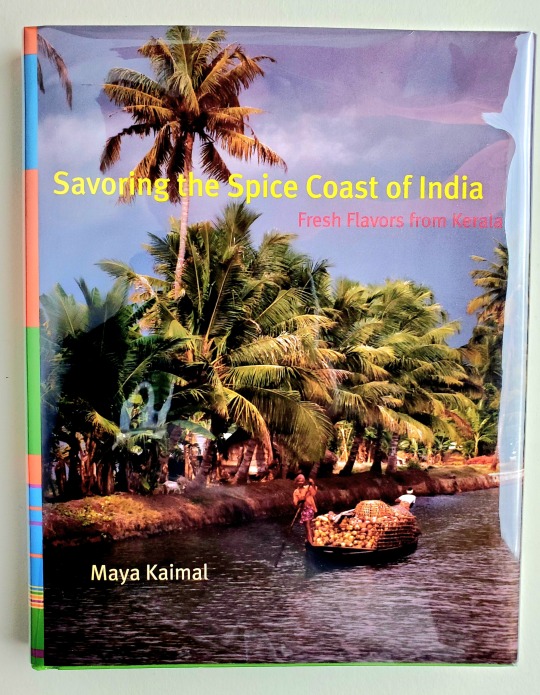
Savoring the Spice Coast of India: Fresh Flavors from Kerala -
Here in Special Collections, we have two of Maya Kaimal's cookbooks, including Savoring the Spice Coast of India: Fresh Flavors from Kerala.
According to Publishers Weekly, "With northern India's Moghul cuisine now a culinary mainstay in the U.S., Kaimal (Curried Favors) returns to her ancestral homeland on the southwestern edge of the country, where a greater emphasis is placed on ingredients such as coconut, tamarind, brown mustard seeds and curry leaves. (These last are so important that Kaimal even provides a source for curry leaf plants.)"
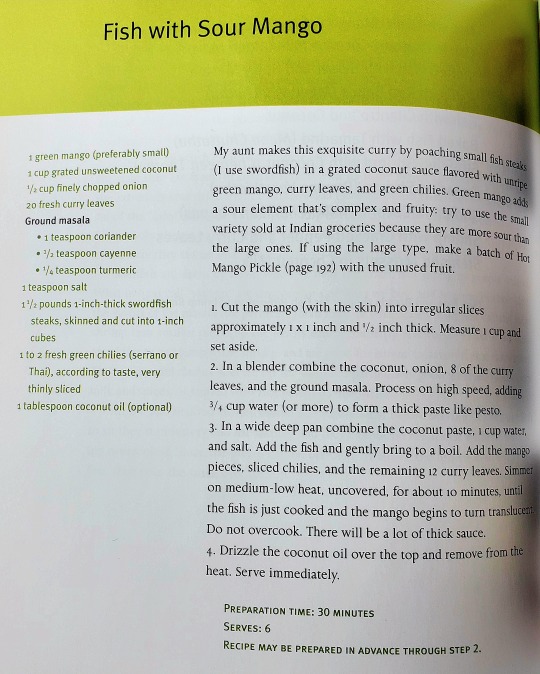


--Matrice Y, Special Collections, Olson Graduate Assistant
#uiowa#libraries#university of iowa#uiowaspecialcollections#voicesfromthestacks#special collections#specialcollections#indian cooking#cookbook#recipes#Cooks of Color
19 notes
·
View notes
Photo
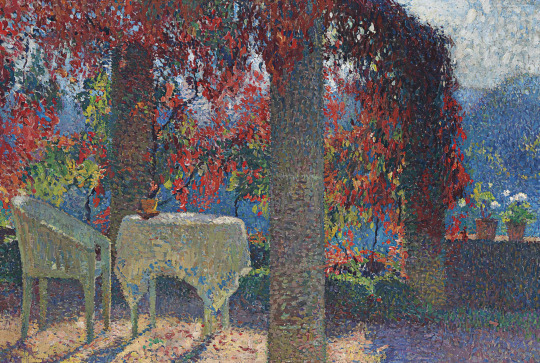
Henri Martin (1860-1943) - La pergola de la cuisine à Marquayrol, un matin d'automne
Oil on canvas. Painted c.1920.
26.4 x 38.6 inches, 67 x 98.1 cm. Estimate: US$350,000-450,000.
Sold Christie’s, New York, 16 May 2018 for US$492,500 incl B.P.
Marquayrol was Martin’s villa in southwestern France, overlooking the village of Labastide-du-Vert. Martin summered there each year having purchased the property in 1900.
36 notes
·
View notes
Note
Happy STS!
Someone finds your google history for your wip. How much trouble are you in?
Happy STS, Elli! Thanks for the ask!
Hell, I'm in trouble for my WIP WITHOUT anyone finding my Google history. 😂
But, yeah, okay, let's do this. For GSNBTR, off the top of my head:
Serious stuff:
First, obviously, numerous searches related to chemistry, physics, and engineering, including survivorship bias theory, i.e. the rocket thing (probably spent weeks on that alone), organic chemistry and the different methods for teaching it (yes, I downloaded textbooks), premed degree requirements, molecular orbital theory (yes, it's a real thing, I didn't just make it up), actual IRL mirror telescopes, how they're built, where they're located, and what they do, CERN and the large hadron collider, fog bows and the guy who discovered them, liquid nitrogen, how it's used and stored and its effects on chemical bonds, idk probably dozens of other topics ...
Every topic related to ancient practices of slavery one could possibly imagine -- everything from day-to-day treatment of slaves in Greece and Rome, how much it cost to buy and maintain slaves, slavery and the legal system, different types of tortures and punishments, the historical proportion of slaves to the free population, laws related to sex and gender, Partus sequitur ventrem, Aristotle vs. Seneca and the Stoic views on the nature of slavery and the soul, and yes, different types of historical manumission (stay tuned for more on that soon thanks to another ask ...😉) Some of this knowledge long predates my current WIP (I studied the classics, as I'm sure I've mentioned) but I needed to refresh my memory.
Literacy and the different methods and timeframes for teaching it as well as basic mathematical and scientific concepts and problems and how those are taught
Poetry and literature, in particular Shakespeare, Hugo, Plautus, Terence, Joyce, Yeats ... and the Bible.
Languages: Luxembourgish, French, German, and Spanish, in particular curses, slang terms, and colloquialisms, but also viewing/listening native speakers to get a feel for the accents and fact-checking everything through Google translate and online dictionaries (thank you, lod.lu!)
Various European countries' geography, economies, and politics, agriculture, cuisine, currency, etc.
Southwestern desert geography, flora and fauna (I lived there of course, but I still needed to make sure to get the details right)
The gambler's fallacy and the theory of scientific realism
Whumpy stuff:
1st, 2nd and 3rd-degree burns and their treatment
Use of cattle prods in torture and the difference between cattle prods and tasers
Handcuffs and shackles and how to escape from them (if they're put on correctly and you don't have the key, good luck)
Wound dehiscence, types of sutures, torn rotator cuffs and other arm injuries, how they're treated and how they heal
Videos of field medicine techniques
Photos and descriptions of scar tissue
Dozens of videos of street fights and descriptions of hand-to-hand combat techniques for people of different genders, sizes, and skill levels (tbh I probably spent longer on this than any of the science, because it does not come easily to me)
Whatever other injury anyone did or will suffer from, assume I looked it up (whether or not I decided to ultimately portray it accurately or not 😂)
Miscellaneous:
Microchipping in pets and how it might apply to humans, particularly their migration and potential removal, and the possibilities of real-time GPS tracking using them (there is a possibility, but right now this concept is still sci-fi)
Different car makes and models, how long they've existed, and how they're designed and driven
Different companies, pop culture entities, and brand names and specifically how long they've existed (if they began post-1950, I can't use them)
BDSM etiquette, safewords, etc.
Other spicy stuff, including the likelihood of multiple orgasms (YOU ASKED) 😂 and synonyms for common body parts and sexual terms just to help me be more creative (thank you, Ao3 Guide to Writing Smut)
Topics related to tech startups, finance, IPOs, mergers and acquisitions, etc., though I also use that in my day job ...
Astrological signs and MBTIs for my characters
The rules of golf 😂
Tons of stuff I'm forgetting
Yeah. I'm not sure what this hypothetical person viewing my search history would think of that, but they'd probably be concerned. Or intrigued, in which case they're my new BFF.
5 notes
·
View notes
Text
Mexican-American food isn't "fake Mexican food"- southwestern US and northern Mexican cuisine, to put in the easiest terms, share a "common ancestor."" The southwestern US only became part of the US in the mid 19th century- it used to be part of Mexico.
6 notes
·
View notes
Note
top 5 places to eat in the general dmv region?
This is going to be massively unhelpful, because due to severe food allergies and growing up keeping kosher in a place with no kosher restaurants (and still keeping vegetarian or kosher when I eat out) I just....barely ever go to restaurants because it's simply not a habit I developed and I do have to be very careful, which is stressful (also I genuinely enjoy cooking, and my friends in the area also either have food sensitivities/enjoy cooking, so my social events are usually either at people's homes or at bars). Also I moved here right before covid which has been a factor as well; I already went to restaurants rarely and it's gone down to "literally almost never".
Uh...I do like Dukem on U Street for Ethiopian which is the cuisine one absolutely should have if you are in the DC area. There's a kosher shwarma place called Oh Mamma in Rockville I've been to which was pretty good. My two family members who have visited have both been the vegetarians of the family as well as keep more strictly kosher than I, so I've been to the Shouk on K Street and the Hip City Veg by the National Portrait Gallery a TON but "fast casual kosher vegan you can eat before going to a Smithsonian" is like, a very specific vibe and it might not be your vibe. I went to Mission in Navy Yard for Mexican with some coworkers not long ago and it was good although I am from the Northeast and if you're from the southwestern US you might be like "girl this is not serious."
#answered#Anonymous#top 5 ask meme#i only eat hip city veg before or immediately after going into a museum it's the rule
4 notes
·
View notes
Text



National Pizza Day! February 9
44 Join us on February 9 as we celebrate National Pizza Day! It’s hard to imagine that before World War II, pizza was little known outside of Italy or Italian immigrant communities. This cheesy disc went from a niche cultural meal to the star of the show anywhere it turns up! Let’s hear it for pizza!
History of National Pizza Day
Though flatbreads with toppings were consumed by ancient Egyptians, Romans, and Greeks, the modern birthplace of the pizza is southwestern Italy’s Campania region, home to Naples. Founded around 600 BC as a Greek settlement, Naples in the 1700s and early 1800s was a thriving waterfront city. Technically an independent kingdom, it was notorious for its throngs of working poor, or lazzaroni. These Neapolitans required inexpensive food that could be consumed quickly. Pizza — flatbreads with toppings that can be eaten for every meal — fulfilled this need. These early pizzas featured tasty toppings such as tomatoes, cheese, oil, anchovies, and garlic. More well off Italian authors judged Naples’ innovation, often calling their eating habits disgusting.
In 1861, Italy finally unified, and King Umberto I and Queen Margherita visited Naples in 1889. Legend says that the traveling pair became bored with their steady diet of French cuisine and asked for an assortment of pizzas from the city’s Pizzeria Brandi, founded in 1760. The variety the queen enjoyed the most was called pizza mozzarella, a pie topped with the soft white cheese, red tomatoes, and green basil — much resembling the Italian flag. Since then, this particular choice of toppings has been dubbed the Margherita pizza.
However, even with the Queen’s love for the dish, pizza would remain little known in Italy beyond Naples’ borders until the 1940s. Across the sea, immigrants to the United States from Naples were replicating their flatbreads in New York and other American cities. They were coming for factory jobs, but accidentally made a culinary statement. Relatively quickly, the flavors and aromas of pizza began to intrigue non-Neapolitans and non-Italians alike.
5 notes
·
View notes
Text
Cape Town, South Africa: Where Nature's Beauty Beckons

Nestled between majestic mountains and the glistening ocean, Cape Town stands as a testament to the sheer splendor of South Africa's natural wonders. With iconic landmarks like Table Mountain and the Cape of Good Hope, alongside pristine beaches such as Camps Bay, this vibrant city has established itself as a must-visit destination for travelers seeking both adventure and tranquility. Offering a delightful fusion of captivating landscapes, rich cultural heritage, and a vibrant culinary scene, Cape Town has something to captivate every visitor.
Table Mountain

A Natural WonderDominating the city's skyline, Table Mountain is Cape Town's most iconic attraction. This flat-topped mountain, recognized as one of the New7Wonders of Nature, offers breathtaking panoramic views of the city, coastline, and beyond. Adventurous souls can hike up the mountain or take the cable car for a mesmerizing ascent. Once at the top, the awe-inspiring vistas and unique flora and fauna make for an unforgettable experience.
Cape of Good Hope
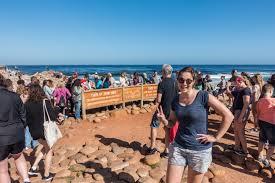

Where Oceans ConvergeLocated at the southwestern tip of the African continent, the Cape of Good Hope is a place of myth and historical significance. As the meeting point of the Atlantic and Indian Oceans, this rugged headland showcases dramatic cliffs, sweeping vistas, and a wealth of indigenous wildlife. Exploring the Cape of Good Hope Nature Reserve, visitors may encounter playful baboons, ostriches, and even Cape fur seals. The iconic Cape Point Lighthouse, perched on the cliffs, is a testament to the region's seafaring history.
Beaches of Bliss

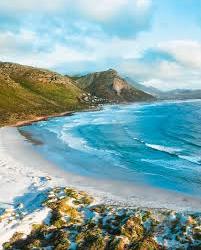
Camps Bay and BeyondCape Town is blessed with an array of stunning beaches, each with its own unique charm. Camps Bay, nestled at the foot of the Twelve Apostles mountain range, is a picturesque stretch of soft sand and crystal-clear waters. Surrounded by trendy restaurants and cafes, it offers the perfect setting for sunbathing, people-watching, and enjoying breathtaking sunsets. For those seeking a quieter seaside retreat, Clifton's four pristine beaches, protected by granite boulders, provide secluded spots for relaxation.
Cultural Kaleidoscope


Diversity and HistoryCape Town's rich history and cultural diversity add depth to its natural allure. Robben Island, a UNESCO World Heritage Site, serves as a poignant reminder of South Africa's struggle for freedom during apartheid. Visitors can tour the prison where Nelson Mandela was held captive, gaining insight into the country's turbulent past. The vibrant neighborhoods of Bo-Kaap and Woodstock showcase Cape Town's multicultural fabric through their colorful facades, traditional cuisine, and lively markets.
Gastronomic Delights


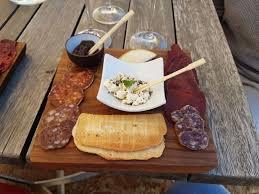
Cape Town's Culinary SceneCape Town's vibrant food scene caters to all tastes and budgets. From fine dining establishments serving innovative dishes crafted from locally sourced ingredients to bustling food markets brimming with flavors, the city is a haven for food lovers. The Victoria & Alfred Waterfront offers a wide range of culinary experiences, while the Cape Winelands, just a short drive away, beckon with award-winning wines and picturesque vineyards.
Cape Town, South Africa, with its remarkable blend of natural beauty, cultural heritage, and culinary delights, is a destination that captivates the hearts of travelers from around the world. Whether you find yourself ascending Table Mountain, exploring the untamed beauty of the Cape of Good Hope, basking in the sun on Camps Bay's golden sands, or immersing yourself in the city's diverse culture and gastronomy, Cape Town offers an experience that will leave an indelible mark on your soul. Prepare to be enchanted by this vibrant city that harmon.
Discover Travel city
3 notes
·
View notes
Note
🔥uhh any food opinions?
- rare steak >>>>
- im a pineapple on pizza truther
- southern/southwestern food is the best US cuisine
- higher heat level doesn’t immediately make a dish better and having a higher heat tolerance doesn’t automatically make your palette more advanced than someone who is more sensitive
- red velvet fucking sucks
5 notes
·
View notes
